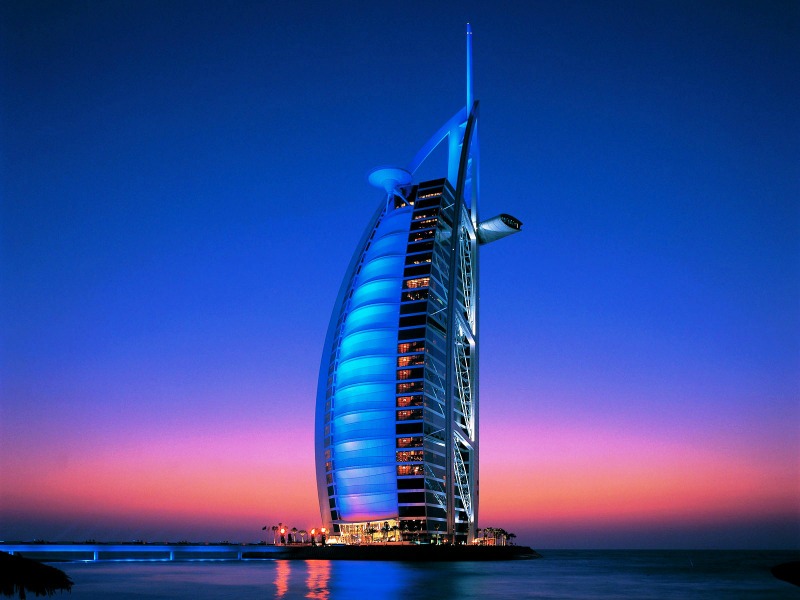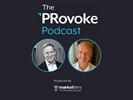Maja Pawinska Sims 14 Feb 2020 // 7:38AM GMT

EMEA is an established and accepted term for a rather large slice of the world in global corporate land, even though we all know that the idea that Europe, the Middle East and Africa are one homogenous 'region' is laughable. This is equally true of the three sub-regions themselves: the closer you zoom in on the map, the more distinctiveness and nuance you see, from language, culture and society to dominant industry sectors, landscape and geopolitics.
At PRovoke Media’s annual Middle East & North Africa conference last week in Dubai, we looked at trends, drivers, opportunities and challenges for this particularly complex region through the lens of the PR and communications industry. Some firm themes emerged from our panel sessions and conversations with agency and in-house leaders and practitioners, from what’s going on in individual markets, to broader emerging movements.
A focus on outside perception
There’s always going to be tension between how a nation sees itself, and how the rest of the world views it (as evidenced, for example, by Brexit in the UK). There’s a lot of work going on across the Middle East to shift outside assumptions, perceptions and stereotypes, from huge tourism promotion briefs, to building and repositioning entire nations (of which more later), and none of this can be done without communications.
The eyes of the world will certainly be on the region when Expo 2020 – the first ever World Expo to be held in the region – opens in October. The “greatest show on Earth” will be held for six months on a 438-hectare site between Dubai and Abu Dhabi, featuring pavilions and stands from 190 countries and welcoming something like 25 million visitors. In addition, Saudi Arabia will be hosting the G20 leaders’ summit in November.
As well as the lucrative PR contracts attached to Expo 2020 since it was announced in 2013 — from crisis and reputation management to regional and global comms — Robin Gordon-Farleigh, founding partner of Manara Global, is confident that Expo will have a significant effect on positive impressions of the region: “It provides a wonderful opportunity to reframe the narrative for the region. The challenge for organisations and brands alike is to smartly align with these agendas to position themselves as part of this wider narrative of reshaping the future and helping to forge the positive legacy that will be created.”
As senior in-house practitioners at PRovoke MENA — including Omar Zaafrani, senior vice president of group communications and corporate social responsibility at ADNOC and Umayma Abubakar, director of internal corporate relations at Mubadala — said, it was time to show the soft power of the UAE, and the value that it added.
Boutros Boutros, divisional SVP of corporate communications at Emirates, put this in regional context, however: “The UAE is a successful model but it’s a unique model, unfortunately. We would like to see other markets in the region copying the UAE model. But elsewhere in the region we have a lot of work to do fighting poverty, fighting corruption.”
A new era for Saudi Arabia
Everyone we spoke to agreed that Saudi Arabia was the major driver of growth in the region, as part of its ongoing efforts to build The Kingdom of Saud 2.0 in line with Crown Prince Mohammed bin Salman’s Vision 2030 reform programme.
The prince’s nation-building efforts, underpinned by globalization and the digital revolution, have included new rights for women — including allowing them to drive for the first time —efforts to tackle international terrorism, tax reform, and a more welcoming attitude, including a new enthusiasm for cultural and sporting events. All of which creates a new platform for the nation to work on improving its image, and therefore attract trade, tourism and international investment, and is yielding some hefty new government-funded PR contracts.
At Weber Shandwick in Dubai, consumer lead Rami Mallis says: “It’s no secret that KSA’s accelerated path to diversification — characterized by sweeping economic and cultural reforms implemented under Saudi Vision 2030 — is dominating international attention and stimulating brands’ marketing investment.”
But he underlines that PR associated with these reforms and initiatives must be authentic: “Those that can capitalize on Saudi culture, communicate with authenticity in a local dialect and take the time to listen to their audiences to deliver hyper-local communications that offer real value – irrespective of channel – will stand out and win hearts and minds. In such a unique market, global brands need to fully embrace cultural nuances and commit to a long-term conversation to get traction.”
At Hanover, Middle East MD Jonty Summers confirms that “half of all the communications mandates are coming out of Saudi” but is one of several agency leaders to point out that “there’s not enough PR talent in the country to do what they need to do.”
This is echoed by Asda’a BCW’s Middle East president Sunil John, who confirmed that Saudi Arabia is the key driver but warned of the talent crunch in the nation. Added APCO Worldwide’s MENA president Mamoon Sbeih: “Saudi is the fastest growing market. It’s a huge struggle: we keep shipping people there, which clients see as an insult, but there’s not enough talent there.”
There may be plenty of work, but as well as finding enough people, agencies are reporting alarmingly slow payment terms from the Kingdom, with a P&L-straining wait of 12-18 months not uncommon.
Women and young people first
Societal progress is being made in the Middle East, but a panel session at PRovoke MENA confirmed that “not enough is being done” on equality. UN Women’s head of partnerships Hannah Beswick said: “We’ve had to reject partnerships with fast fashion chains and global supermarkets because we don’t believe they are living their brand values, or… because they are putting out images in the advertising and marketing that objectify women. I think you could all be doing more.”
There were also concerns that young people’s voices are not being heard, and brands are not listening to such a critical demographic. According to the students and young activists on Memac Ogilvy’s PRovoke MENA panel, brands ignore Middle Eastern youth at their peril.
With 65% of the region's population under the age of 30, brands are being forced to face new expectations, and not all are equipped for the shift. “For brands in the Middle East it's impossible to ignore the youth,” said Jaguar Land Rover PR and social media manager Salman Sultan. “For any brand to survive they need to think about their future customers. We need to invest in them first. Do not underestimate the youth, especially in the region. They are switched on, they are informed, they are opinionated.”
Memac Ogilvy Beirut senior account manager Miriam Awada said that “because we are such an informed generation — information enables us to be activists, and we expect brands to be our partners in that purpose. We expect brands to be honest. We expect that they are partners with us."
Weber Shandwick's Mallis adds: “In a market where 70% of the population is under the age of 30, young consumers’ already-short attention spans will be increasingly flooded with new messages, experiences and forms of entertainment, brands will have to work much harder to earn their attention…and their Riyals.
“Emerging platforms like TikTok that champion creativity and showcase microcosms of local culture and talent, represent an unprecedented opportunity for brands to experiment with short form content that goes above and beyond the norms of influencer marketing.”
Within this ecosystem, influencers are still problematic for brands, as they have been elsewhere. Danae Mercer, former editor-in-chief of Women’s Health Middle East said fake influencers were an issue in the region: “It’s very common to buy likes and follows, and you have brands that don’t realise, that are ignorant, and brands that do realise, but don’t care. But we’re seeing an audience that is becoming smarter and they want that authenticity and transparency from influencers, and from the media. Influencers and publications that can get ahead of the curve will have a powerful position.”
The emergence of purpose
There’s also work to be done around the emergence of social impact and purpose in the region. Teri O’Donnell, founding partner and chair of Manara Global, confirms this is a growth area for communications: “We have seen the rise of purpose move into the mainstream around the world, and it is increasingly occurring in the region, especially with those organisations with global operations, touch points and ambitions. We are being called on more and more to help organisations in the UAE to define their purpose, shape their platforms and articulate it as part of their future reputation management programmes.”
Alex Malouf, who formerly led P&G’s corporate comms in the region, says there are still a lot of issues around the environment, sustainability and gender: “We’ve just had the Year of Tolerance in the UAE, yet I can’t think of national brands who have stood up and said they want to do something to transform society. It’s our job as communicators to step in and say this impacts reputation, internally and externally.”
Malouf believes MENA-based companies are lagging behind others around the world: “It’s a journey, not an overnight transformation. On the multinational side there has recently been a coming together of like-minded companies to address issues, but we have a serious lack of national companies joining us, even though tackling inequality is part of the national agenda. There has to be a change in mindset.”
But Loretta Ahmed, founder and CEO of Houbara (formerly Grayling Dubai), says she believes 2020 is the year brands in the Middle East will get serious about their social impact and the commitments they need to make to society.
“The youth in the region demand it and the time has gone when products can just get marketed with no tangible link back to the reputation of their owner – be they a small local brand or an international brand headquartered overseas,” she says. “Storytelling matters but only if it’s authentic so craft that copy with care and make it resonate. The audience is getting ever more cynical and will rightly hold brands to account when they get it wrong and miss the zeitgeist of the era we all find ourselves in.”
Language and diversity
Our panels (and indeed the audience) at PRovoke MENA could never be accused of a lack of diversity by the standards of Western optics, but another elephant in the room for comms in the Middle East is that the industry has its own particular issues in this regard. Namely, there are far too many expats, the English language is too dominant, and — as elsewhere — the industry needs to keep investing in graduate outreach and training.
The industry remains dominated by non-Arabic language speakers, especially in cities such as Abu Dhabi, Doha, and Dubai. Only 32% of respondents to PRCA MENA’s Middle East PR and Communications Census 2019 were nationals of countries in the region. One fifth of the region’s PR professionals are British, 18% come from India, and the range of other nationalities represented are indicative of the Middle East PR corps having a richly-varied culture mix.
In his recent blog on this issue, Malouf says: “Diversity matters, of course. But I don’t think we even have that when it comes to engagement, given that so much of the content being produced is in English. There’s obvious benefits to improving our ability to communicate in and create Arabic language content. We’ll be reaching a much wider audience in their language. In addition, understanding a language is one step to understanding a culture and its traditions. And by strengthening our Arabic language capabilities, we’ll be able to put Arabic first and create content that’s not translated."
There’s been a concerted push by governments to promote the Arabic language, but many Arabic-language experts working in agencies are from countries such as Egypt, Iraq and Syria. “Given politics in their own countries,” says Malouf, “It’s much harder to come across visas for them. We’ve got to do more with the Arab nationals who are already in the Gulf region.”
He suggests a number of solutions which are also being mooted around the world to increase the number of entrants to the industry from diverse backgrounds, including stronger connections with universities, and better educating young Arabs on the opportunities of a career in PR.
There also aren’t that many Arab nationals in role-model leadership roles, both on the agency side and with clients. “Global agencies especially must prioritize fast-tracking Arab talent into leadership roles,” says Malouf.
And there’s the essential point that, most Arabic content is translated from English. “We’ve got to turn this around, and start prioritizing Arabic content production, both in the written word, with audio and video. Arabic is such a rich, descriptive language, and so much is lost when content is merely translated,” says Malouf.
Economic inequality
Saudi’s energetic societal renaissance (while still viewed with a measure of caution by the West) contrasts with a less dynamic picture in other parts of the Middle East. Apart from Expo 2020, Dubai is now largely flat, economically; despite the ever-present cranes and the ever-rising skyscrapers, many of the glossy new buildings are half-empty. This is leading to plenty of the wrong sort of competition in PR pitches, with price-cutting galore.
Thanks to the oil industry, the other UAE hub, Abu Dhabi, is doing better, and there’s enough work for agencies with energy expertise, as well as an emerging tourism sector. There is hope that Qatar is emerging from the challenges posed by the ongoing regional blockade, but it seems unlikely that other regional markets are going to drive significant growth for the industry.
In Egypt, for example, small, local players continue to dominate the market, alongside fast-growing marketing and advertising group POD, which is part of the state-owned Egyptian Media group.
Accordingly, growth for many PR agencies across the Gulf is stagnant. The exceptions, in common with most markets around the world, are networked agencies with a strong innovation bent — like H+K's new content studio — or smaller firms that bring boutique capabilities. As one agency head put it: “There are five or six PR agencies doing well; many of the others are struggling a little bit, but not nearly as much as the media agencies. The industry is changing, but not transforming.”
As in Saudi, one of the main challenges in terms of PR agencies flourishing in the Middle East is getting paid. This came up repeatedly in our conversations with agency heads. Debt is common, and sometimes untenable: at least two global networks have struggled to remain viable in the region.
Summers says: “Getting paid is a challenge, either because of inefficiency, or disputes over scope of contracts. We have had to — very nicely — say we’re stopping work on occasion, because it’s not acceptable.”
The Middle East is a complex market. It’s certainly not a region that communicators can approach with a one-size-fits-all solution. There are myriad challenges, and a whole lot of business and creative opportunities. There is, as all our commentators say, very region-specific work still to be done.
Golin MENA managing director Yiannis Vafeas expresses this adeptly: “Markets in our region are in different stages of the communications maturity scale, and yet the region still provides opportunity that many other markets don’t. Our success is directly tied to our clients’ success, and this means elevating our offering to go beyond the core. Market research, go-to-market planning, market entry insights — all represent relevant additional opportunities for a public relations agency with its finger on the pulse, ear to the ground, and feet firmly in the region.”
At Weber Shandwick, Mallis says that in 2020, the Middle East “continues to present brands and their partners with a vast canvas to experiment with bold and agile communications in an increasingly demanding and sophisticated region.”
And the final word goes to APCO’s Sbeih: “The PR industry [in MENA] is at a crossroads to becoming a true industry.”
Additional reporting by Arun Sudhaman and Paul Holmes.


































.jpg)




















.tmb-135x100.png)









